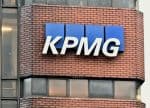Is your business ready to take advantage of the current growth in the marketplace and will you grow faster than your competition asks Paul Fagan?
The word on the street is that the boom is back. And yes, lots of businesses are seeing increased footfall and a loosening of the purse strings. However, there is still a sense of an urban/rural divide when it comes to the recovery. Many companies, particularly those located outside of larger urban cities such as Dublin and Cork, are still waiting to feel the benefits of our improved economic standing.
One of the biggest challenges companies are experiencing is that having scaled back during the recession, they are not ready, or in a position to capitalise fully on the opportunities for growth.
This is where strategic business planning comes into play. It is essential – no matter how big or small your business is – to regularly take time out of the day-to-day running of the company to focus on the bigger picture.
What’s going on around you and how does it impact your business? What do you want your business to specifically achieve in the next one, three, five years, and how are you set up internally to make that happen? You may have lots of great ideas about what you would like your business to achieve, but without setting out clearly defined goals and targets, with a written business plan detailing the strategies required to achieve them, real growth will fail to materialise.
There will always be external factors that you must be mindful of such as concerns over the global economy, such as falling oil prices and the global stock market decline. What can we do about these factors in the short to medium-term? Not a lot. Although we must consider how they could impact our business, what’s more important is to look at what we can do to influence and plan for growth.
Once a business owner understands the importance of planning and goal setting, the next step is to look at how to execute strategies specifically for sales growth. When it comes to increasing sales, many business owners and management teams immediately think: ‘we need to invest in marketing to generate more leads’. The buzz words right now are digital marketing and driving online sales. And yes, these things are relevant and important but so too is getting the simple things right first.
STRATEGIES AND METRICS
There are lots of easy ways to increase your sales and generate healthier profits before going down the line of investing in marketing strategies. One of the first things we look at with a business owner is the numbers. What is your total number of sales for the last year, or even the last month and what profit did you make on these sales? Are you selling the right products or services? Could you put more focus on selling higher margin products for example?

Paul Fagan, MD, Business Coaching Ireland
There are a number of key metrics that are worth considering. How many enquiries did you generate and what was your conversion rate on those enquiries? You would be surprised how many business owners do not measure these two key numbers.
One of the biggest challenges companies are experiencing is that having scaled back during the recession, they are not ready, or in a position to capitalise fully on the opportunities for growth
Having a good conversion rate is the foundation for healthy sales volume. You might already have plenty of leads but what’s the point therefore in spending money on marketing to attract new prospects, if you are not converting sales with the leads you have?
Can you do more business with existing customers?
And what about previous clients – did you ever contact them to ask why they stopped buying from you? Or are they still in the market for your product or service? Often simply touching base with old clients can reignite the relationship and generate new business.
One of our clients has recently reported a 45% increase in sales as a result of focusing more on a few of these simple sales strategies. Yes we reviewed the numbers and set a sales target with the management team. But what we did differently with the staff was set KPIs on their daily sales driven tasks required to hit the targets, rather than get them to focus on the target itself, which we knew we would get pushback on, as ‘unrealistic’ from the sales team.
We put daily sales calls schedules in place with a specific sales script designed to increase conversion. We also pulled together lists of all of the company’s old clients and prospects, and had a daily target of calls/visits made rather than sales generated. The sales team were measured on this activity, and as a result sales increased by 45%, which was 15% more than our original target.
From this example, you can see that increasing your sales doesn’t have to be difficult. Simply, by putting more focus on the numbers and measuring activity, you will see results. It’s important to take time to review your numbers and see where you can make small tweaks to reap bigger rewards.







